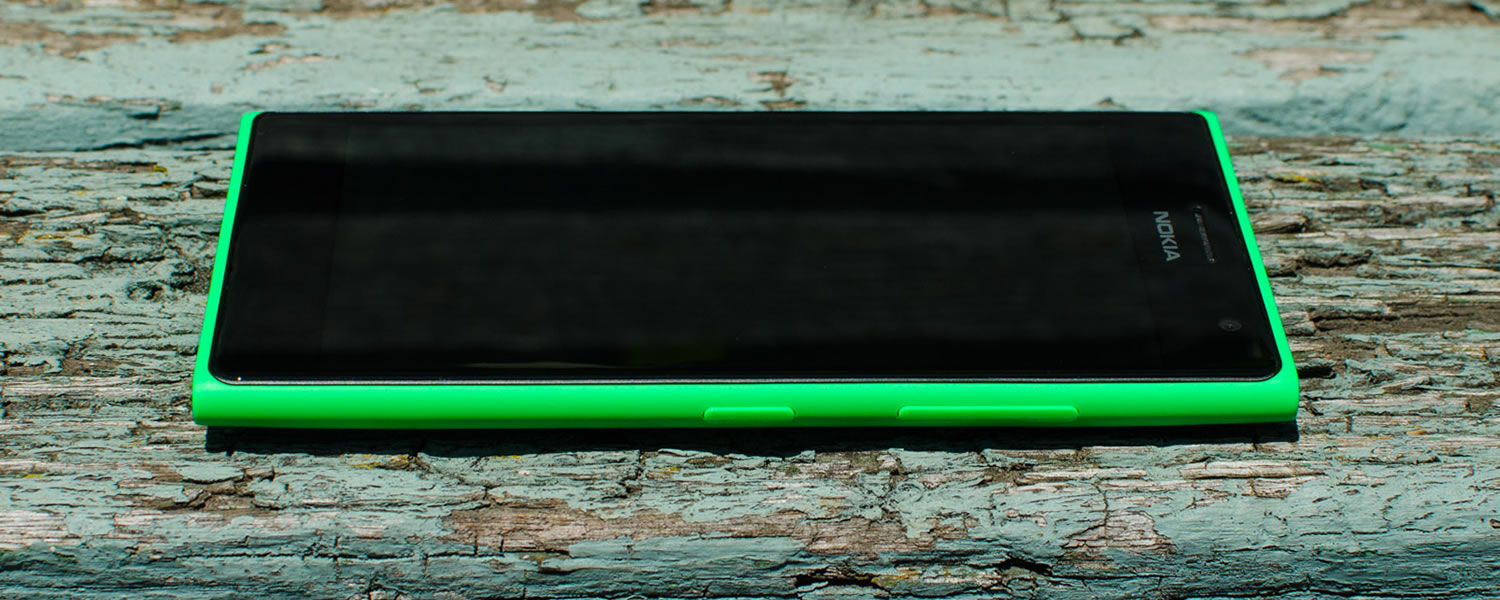Camera: Great for Selfies?
The Nokia Lumia 735 comes with a 6.7-megapixel 1/3.4" CMOS paired with an f/1.9 26mm lens. Although Microsoft lists the device as having a "true 16:9 sensor", this isn't actually correct: the camera captures 3072 x 1728 images at 16:9 (5.3 megapixels) and 2848 x 2144 images at 4:3 (6.1 megapixels), never utilizing the full sensor resolution (1.43:1) in one photo. The sensor Nokia uses contains 1.4µm pixels.
On the front we're looking at a 5-megapixel CMOS with a 24mm f/2.4 lens, designed of course for taking selfies. Ideally I would have liked to see a slightly wider angle lens to capture even more friends in one selfie, but generally speaking it's wide enough. Both cameras are capable of 1080p video recording at 30 frames per second.
Nokia is known for producing some pretty great cameras in their high end smartphones, but in the mid-range they're less of a clear winner. The Lumia 735's sensor has excellent color reproduction for a sensor of this class, combined with great dynamic range and metering that's typically spot on. However there are a number of issues that can be easily noticed, especially when zooming or cropping.
Firstly, capturing images that are, at best, 6.1-megapixels leaves very little room for any sort of manipulation in post. The Lumia 735 also captures photos that are too soft and overtly post processed, giving images a somewhat muddy look even when downscaled to 1080p. Although images taken with this smartphone can look great at first glance - especially on the handset's display - I wouldn't want to use it for holiday photography or capturing important memories.
It's an interesting situation because the Lumia 735's camera delivers better images than the Moto G 2014 from a color, saturation and accuracy perspective, but the lack of comparative detail and sharpness hinders it quite a bit. If Nokia had opted for an 8-megapixel sensor and tweaked their sharpness filter, we'd have a real mid-range winner on our hands.
The Zeiss f/1.9 optics deliver decent bokeh in macro settings, though it's nothing to get particularly excited about. The wide lens and relatively large pixels help improve camera performance indoors and in low light, although not to such an extent that images are any better than other similarly-priced devices. That's to say the Lumia 735 sometimes produces decent images in these conditions, and more often produces mediocre results: a typical result for a mid-range camera.
The selfie camera is an interesting one. In lower light conditions such as indoors and at night, the Lumia 735's five-megapixel shooter is no better than any other 2-megapixel front-facing camera I've used recently, except for an increased resolution. That's to say that images are reasonably low quality, grainy and lacking in color saturation.
It's pretty much the complete opposite when taking selfies outdoors. The Lumia 735's front facing camera in these conditions has good accuracy and vibrancy - although it's definitely not as good as the rear camera - and detail far superior to 2 MP selfie cams. While the performance here is decent, I would have liked to see an increased focus on indoor performance, because that's often where people capture their selfies.
As for video recording quality, the Lumia 735's rear camera captures 1080p/30 video using 19 Mbps Main profile H.264 with 160 kbps stereo audio. Both audio and video quality are impressive considering this is a mid-range handset, and although it doesn't have any fancy features like 4K capture or optical image stabilization, it will do just fine for taking the occasional video.











